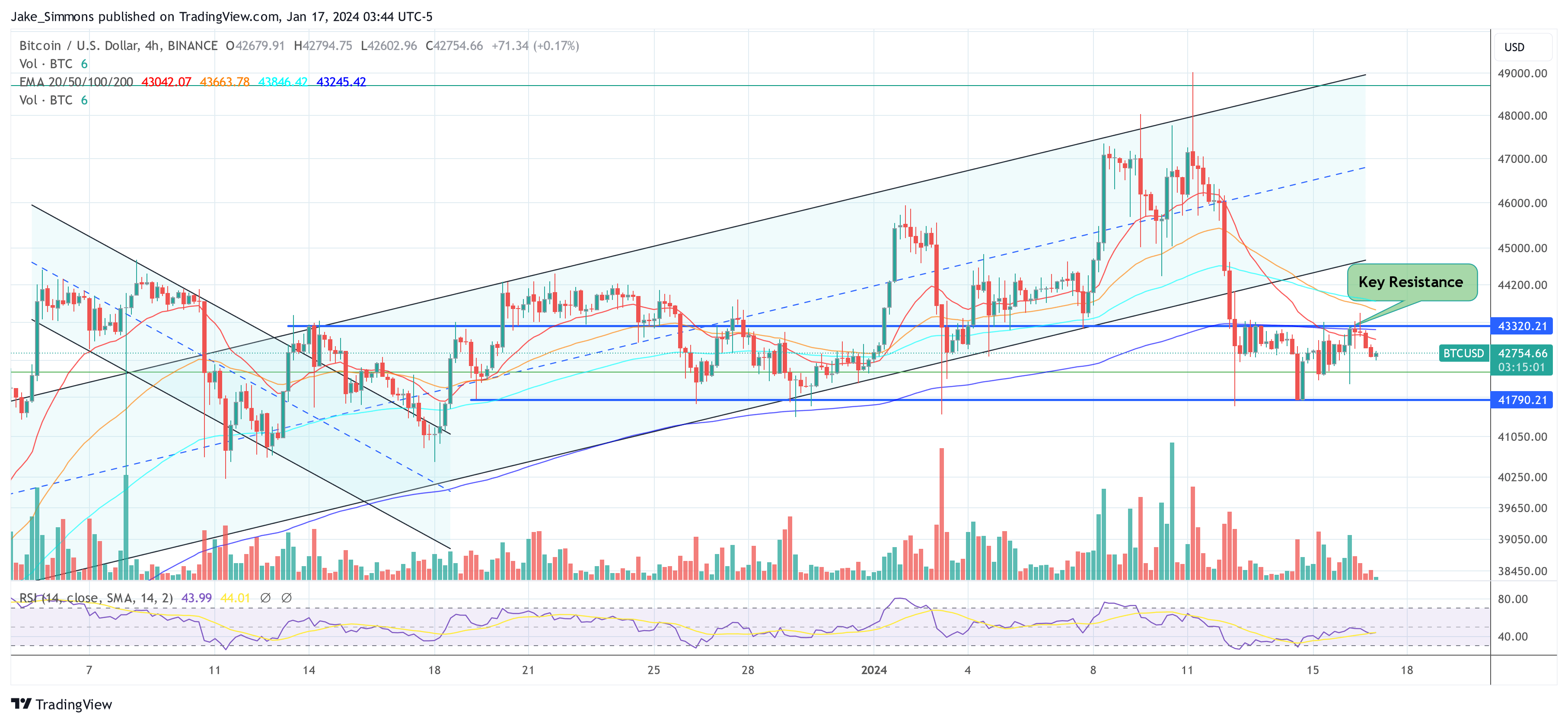Update on the ETF Cointucky Derby. The ETFs have traded almost $10 billion total over 3 days. Will have updated flows and assets later tonight or tomorrow morning. — James Seyffart (@JSeyff)
Despite these impressive figures, Bitcoin’s price performance has not mirrored the trading volume’s growth, a phenomenon analysts attribute to a strategic pivot among Grayscale’s clientele. Investors are increasingly transitioning their capital from Grayscale’s GBTC, with its 1.5% annual fee, to more cost-effective spot BTC ETFs, some offering fees as low as 0.25%.
This shift, however, is not seamless due to the cash-redemption process prescribed by the Securities and Exchange Commission (SEC). Consequently, investors find themselves navigating a temporal gap, redeeming cash and reallocating it to other spot BTC ETFs, typically a few days later.
Understanding The Grayscale Effect On Bitcoin Price
This operational characteristic of Grayscale’s GBTC, which does not facilitate same-day cash redemptions for BTC and operates on a T+2 or T+1 settlement basis, has given rise to a discernible trading pattern. Alex Thorn, Head of Research at Galaxy, provided insight into this phenomenon, :We’re seeing significant Bitcoin trading volume now during US hours, particularly between 3-4pm NY now during the ETF fix, escalating into what has lately been a predictable Grayscale dump into the close. The game is evolving.
Echoing this sentiment, Daan Crypto Trades a consistent pattern in Grayscale’s operations, highlighting, “Grayscale is sending X amount of Bitcoin to Coinbase ~1 hour before the market opens every trading day. Will be a good indicator to gauge how bad the outflows of GBTC are I think. 4K BTC was sent Friday. 9K BTC was sent [Monday].”
Further substantiating these observations, Maartunn from CryptoQuant remarked on the tangible outflow of Bitcoin from Grayscale’s fund, particularly to Coinbase, , “Data doesn’t lie, as seen once again. Shortly after the inflow of Bitcoin from Grayscale to Coinbase, the Coinbase Premium Gap, previously positive, turned negative for the first time this year, indicating strong selling pressure from Coinbase.” He emphasized the correlation between these events and the increased trading volume on Coinbase, especially during the trading hours of the American stock market.














